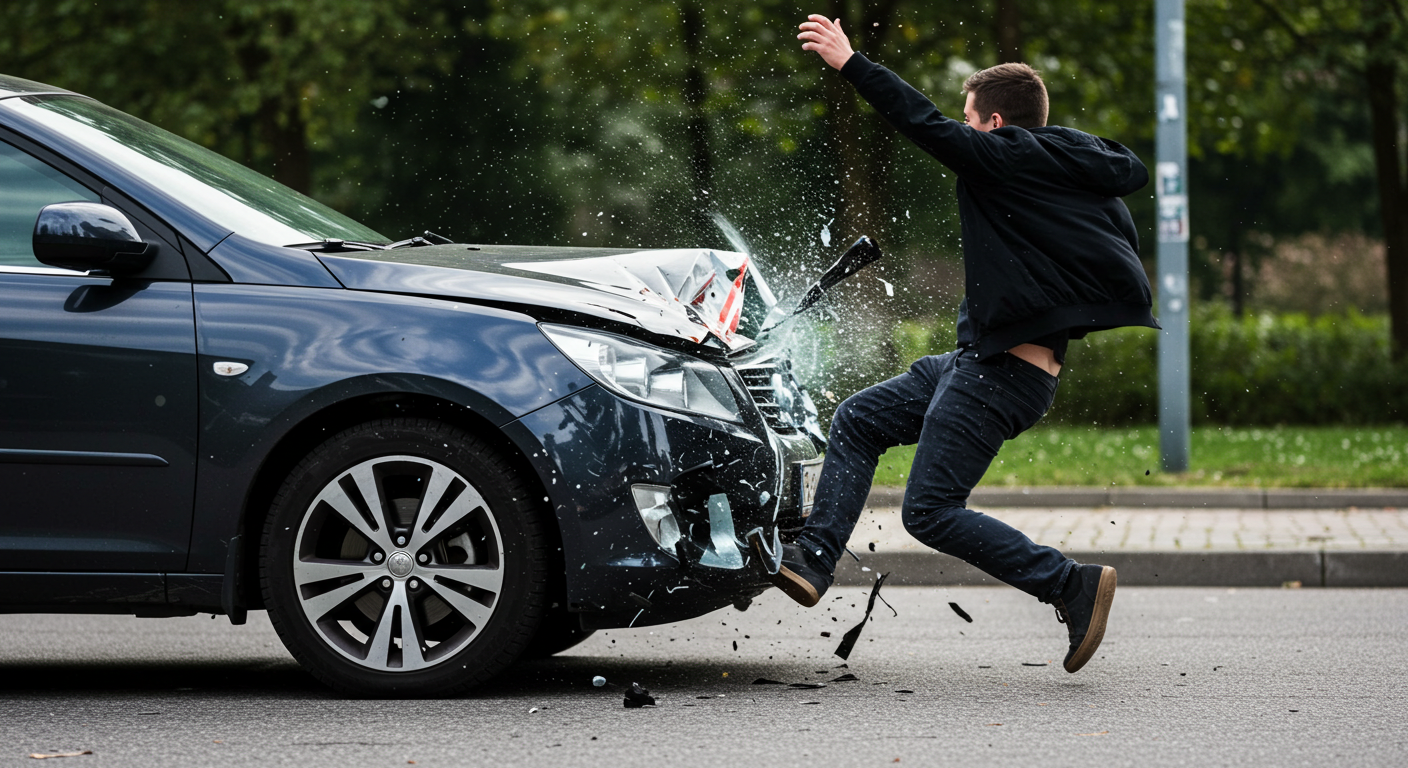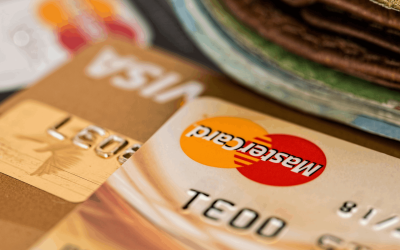The Wisconsin Department of Transportation reports that one pedestrian is injured or killed every 6.9 hours. That’s not to say all Wisconsin drivers are bloodthirsty maniacs or that Milwaukee drivers are the worst in the country. But it does highlight the importance of pedestrian safety and being aware while walking on the road.
The hard truth is that as a pedestrian, you’re vulnerable. When it’s you versus a 4,000-pound vehicle, the odds aren’t in your favor. Even if you follow all the traffic rules and look both ways before crossing, accidents can still happen.
That’s why legal awareness becomes your next best defense. Pedestrians have rights. This guide will walk you through everything you need to know if you’ve been hit by a car in Wisconsin.
Pedestrian Rights and Responsibilities in Wisconsin
When an accident happens, people first look at the two parties involved: the pedestrian and the driver. Both have responsibilities, and they must be aware of their rights in certain situations. Knowing these makes it easier to tell who’s at fault in an accident.
Wisconsin law recognizes that safety on our roads is a shared responsibility. Both pedestrians and drivers must exercise caution. Let’s start with your rights and responsibilities as a pedestrian, which can be found in Chapter 346 of the Wisconsin Legislature.
Right-of-way at Crosswalks and Intersections
Crosswalks and intersections are among the most dangerous places for pedestrians. A crosswalk is any marked or unmarked path at an intersection where pedestrians can cross the street. In Wisconsin, drivers must yield the right-of-way to pedestrians at these crossings.
Rules for Crossing Outside of Crosswalks
On the flip side, if you’re crossing somewhere other than a crosswalk, you must yield to vehicles on the road. So, if you’re jaywalking across a street, you’re responsible for making sure no cars are coming.
Walking on Sidewalks vs. Roadways
If you’re walking along a road without a sidewalk, you should walk on the left side facing traffic. When a car approaches, move as far to the left as you safely can. This way, you can see vehicles coming toward you.
Visibility at Night
At night, you should assume you’re practically invisible to drivers. While Wisconsin doesn’t require it by law, wearing reflective clothing or carrying a flashlight is just plain smart! Think of it like this: you wouldn’t drive at night without headlights, so why walk without making yourself visible?
Pedestrian Signals and Traffic Control Devices
Those little walking person symbols at crosswalks are pedestrian signals, and they’re your friends. They tell you when it’s safe to cross. But here’s the thing – even when you have the walk signal, never assume drivers will stop. Always keep an eye out for vehicles that might not see you.
Driver Responsibilities Towards Pedestrians
On the other side of the equation, drivers have responsibilities too. If they neglect these duties and you end up in an accident, you might have a case for personal injury. Driver negligence is, unfortunately, very common. Look for signs such as:
Yielding the Right-of-way at Crosswalks and Intersections
Remember those crosswalk rules we mentioned? Drivers must come to a complete stop when pedestrians are in or approaching crosswalks. No ifs, ands, or buts about it.
Exercising Caution When Approaching Pedestrians
Drivers should slow down in areas where pedestrians are likely to be present. This means school zones, residential areas, and downtown streets deserve extra attention. They should also watch their blind spots and avoid distractions like texting or fiddling with the radio.
Following Traffic Laws
Certain traffic violations often lead to pedestrian accidents. Speeding is a big one – the faster a car goes, the longer it takes to stop. Running red lights is another common cause. In these cases, the driver is typically at fault.
Common Causes of Pedestrian Accidents
At our law firm, we’ve seen countless pedestrian accident cases. While each situation is unique, certain patterns emerge time and time again.
Here are the most common causes we see:
- Distracted Driving: Picture a driver texting while approaching a crosswalk. They look up too late to see someone crossing.
- Impaired Driving: A drunk driver weaving through traffic hits someone walking on the shoulder.
- Speeding and Reckless Driving: A driver racing through a school zone can’t stop in time when a pedestrian steps into the crosswalk.
- Failure to Yield: A right-turning driver focuses on oncoming traffic and forgets to check for crossing pedestrians.
- Poor Visibility: During a heavy rainstorm, a driver fails to see someone wearing dark clothing crossing the street.
What to Do After a Pedestrian Accident
Whether you’re involved in one of the above scenarios or any other type of pedestrian accident, certain steps are crucial. Not only are these the safe and responsible things to do, but they can also help with potential legal actions.
- Seek medical attention immediately. Even if you feel fine, some injuries take time to show up.
- Report the accident to the police and get a copy of the report. This creates an official record of what happened.
- Gather information from witnesses and take photos of the scene. Document everything while it’s fresh.
- Contact your insurance company to report the incident.
- Talk to a personal injury attorney who can protect your rights.
Seeking Compensation for Pedestrian Injuries
Think of car accidents like personal injury law. You’re entitled to compensation for your troubles, but you need to know what to ask for and how to prove your damages.
Medical Expenses
This covers all your healthcare costs – from emergency room visits to ongoing physical therapy. If you needed an ambulance ride and three months of rehabilitation, that’s all included.
Lost Wages
Say you broke your leg in an accident and couldn’t work your construction job for two months. You can launch a personal injury claim to be compensated for that lost income.
Pain and Suffering
This compensates you for physical pain and discomfort. For example, if you suffered a back injury that causes chronic pain, you deserve compensation for that ongoing suffering.
Emotional Distress
Accidents can leave emotional scars as well. Maybe you’ve developed anxiety about crossing streets or have trouble sleeping due to accident-related trauma.
Loss of Enjoyment of Life
Let’s say you were an avid runner before the accident, but your injuries now prevent you from running. That’s a loss of enjoyment in life, and you can seek compensation for it.
The Role of a Personal Injury Attorney
You should focus on recovery, not navigating the complex legal system. An experienced personal injury attorney can help by:
- Investigating the accident and gathering evidence to support your case
- Determining who’s responsible and identifying all parties who should pay
- Negotiating with insurance companies to get you fair compensation
- Taking your case to court if necessary
Conclusion
If you’ve been injured in a pedestrian accident, you have the right to seek compensation. We hope your injuries weren’t severe, but either way, you deserve to be compensated for your losses.
Remember – pedestrians have rights, drivers have responsibilities, and Wisconsin law protects those who follow the rules. Don’t try to handle this alone.
If you need help understanding your rights, contact Vanden Heuvel & Dineen, S.C. for a free consultation. We’ll review your case and explain your options. Call us or visit our website today.
For more information about pedestrian safety, visit the Wisconsin Department of Transportation website at wisconsindot.gov.




